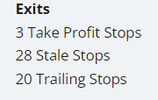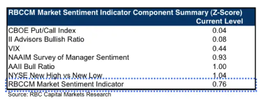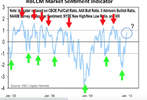- Joined
- 20 July 2021
- Posts
- 12,714
- Reactions
- 17,661
i am wired very differently to most , that post did confirm what i strongly suspectedI deleted my post for a simple reason - no one likes to read lengthy boring posts.
To shorten the post, I'll just display a summary of the strategy's performance in an easy-to-read format. The average profit per trade is relatively low because I'm looking to minimise the risk with this strategy. As I get older risk becomes the most important aspect of my trading.
Trend Momentum Strategy - $100k Portfolio
Total profit: $28,436.75
58 trades
Average profit per trade: $490.29
Winning percentage: 58%
Win/loss ratio: 1.41 (58 wins, 41 losses)
System Drawdown -3.73%
Maximum drawdown: -$4,751.89
Exits
3 Take Profit Stops
28 Stale Stops
20 Trailing Stops
Skate.
cheers and good luck







